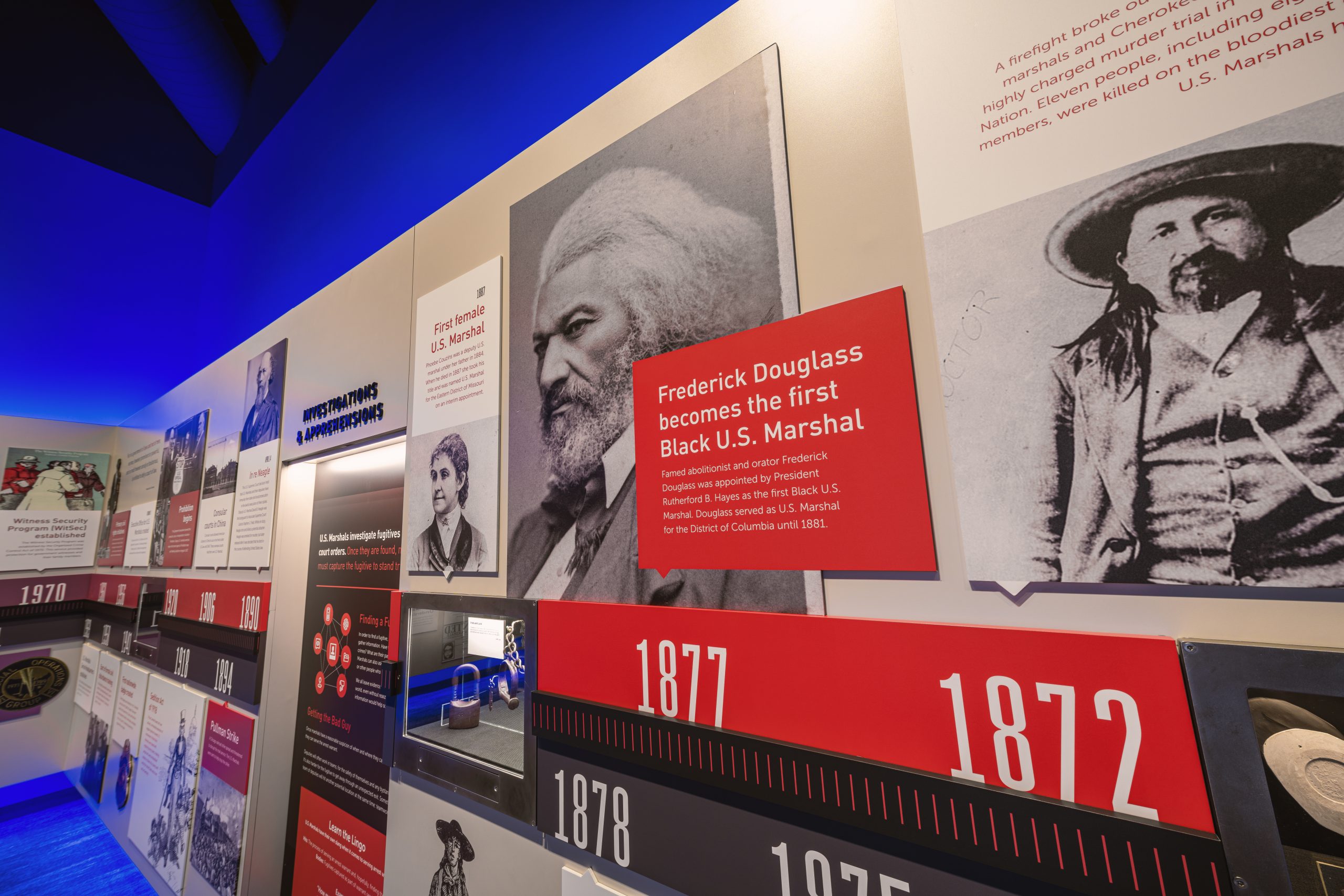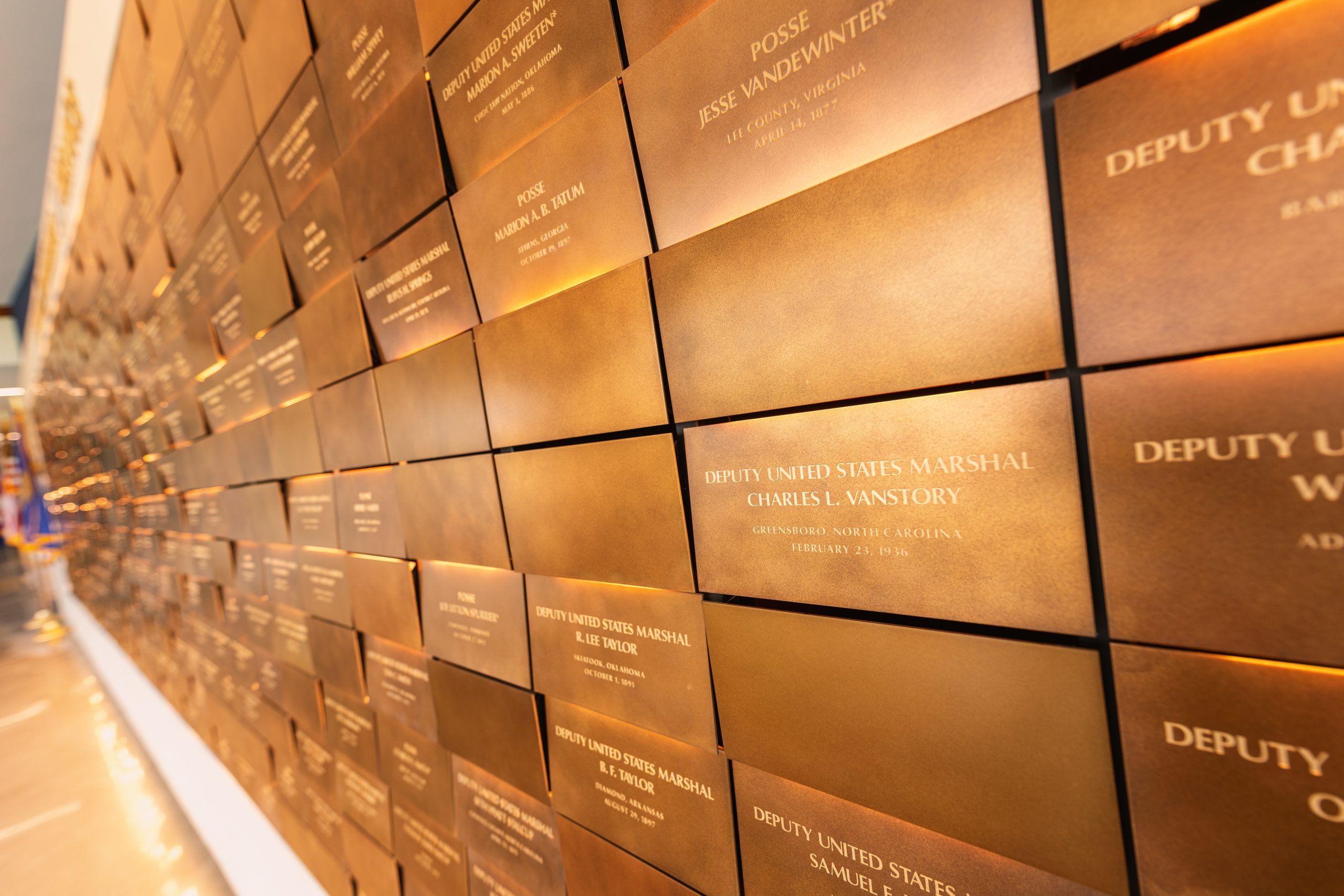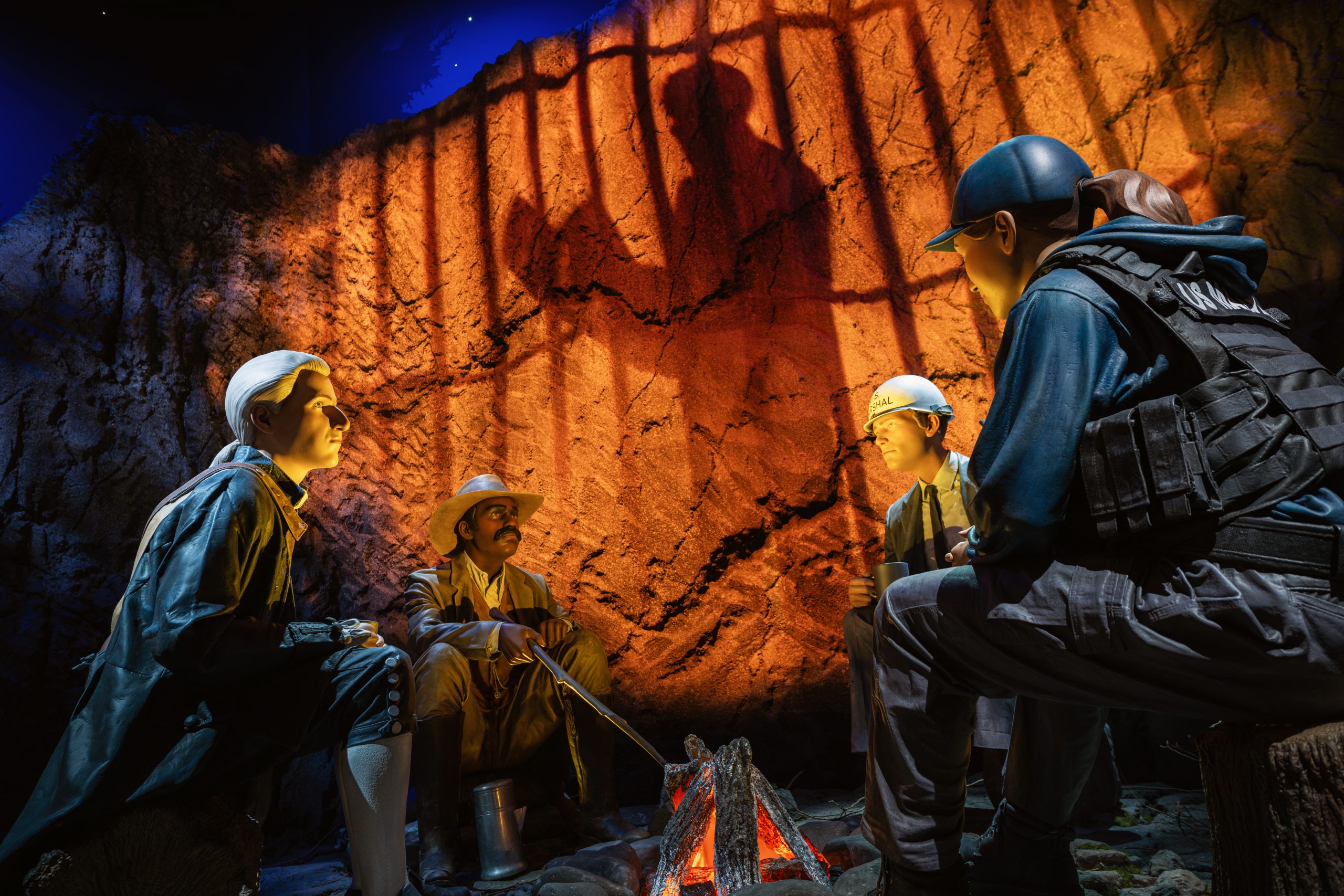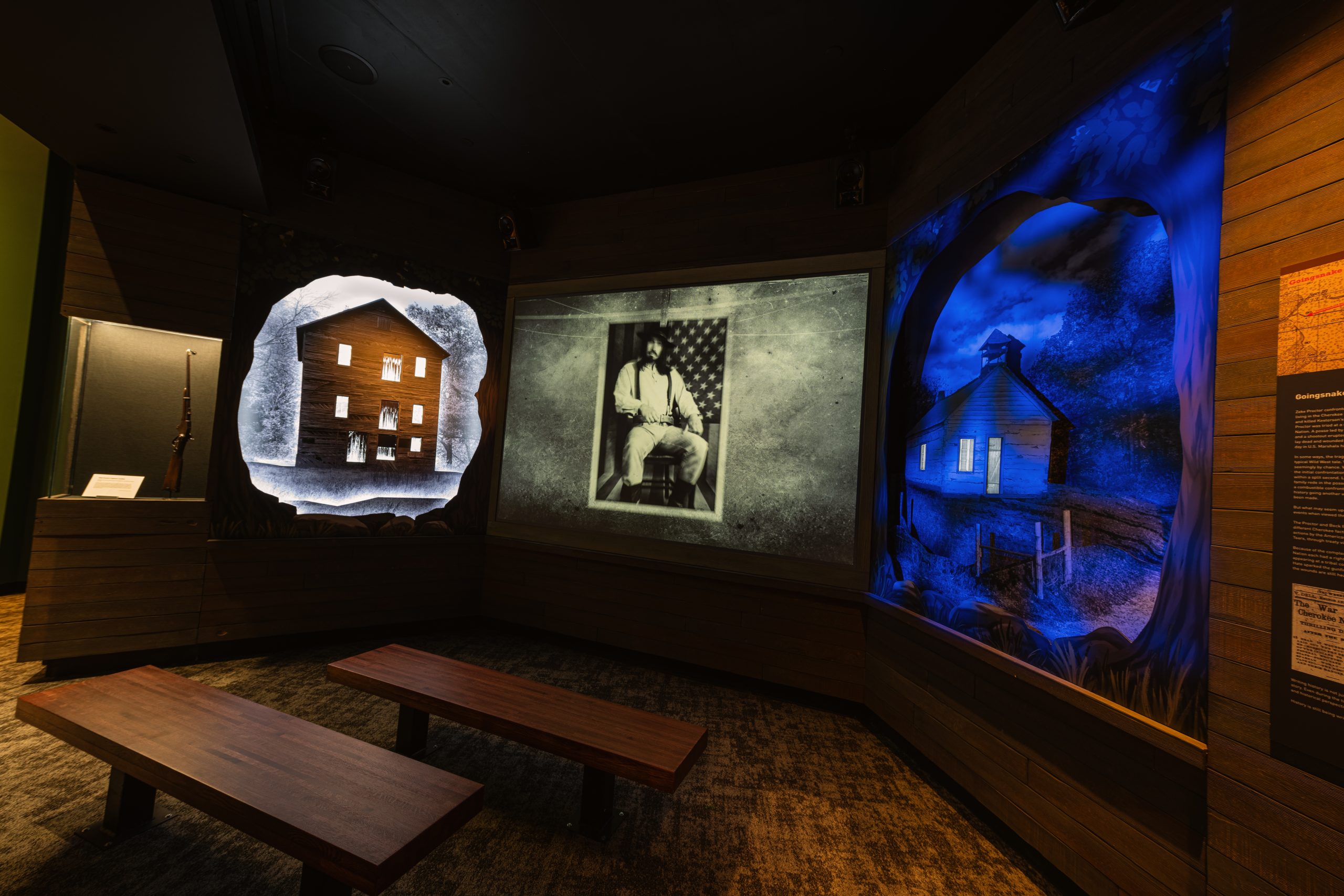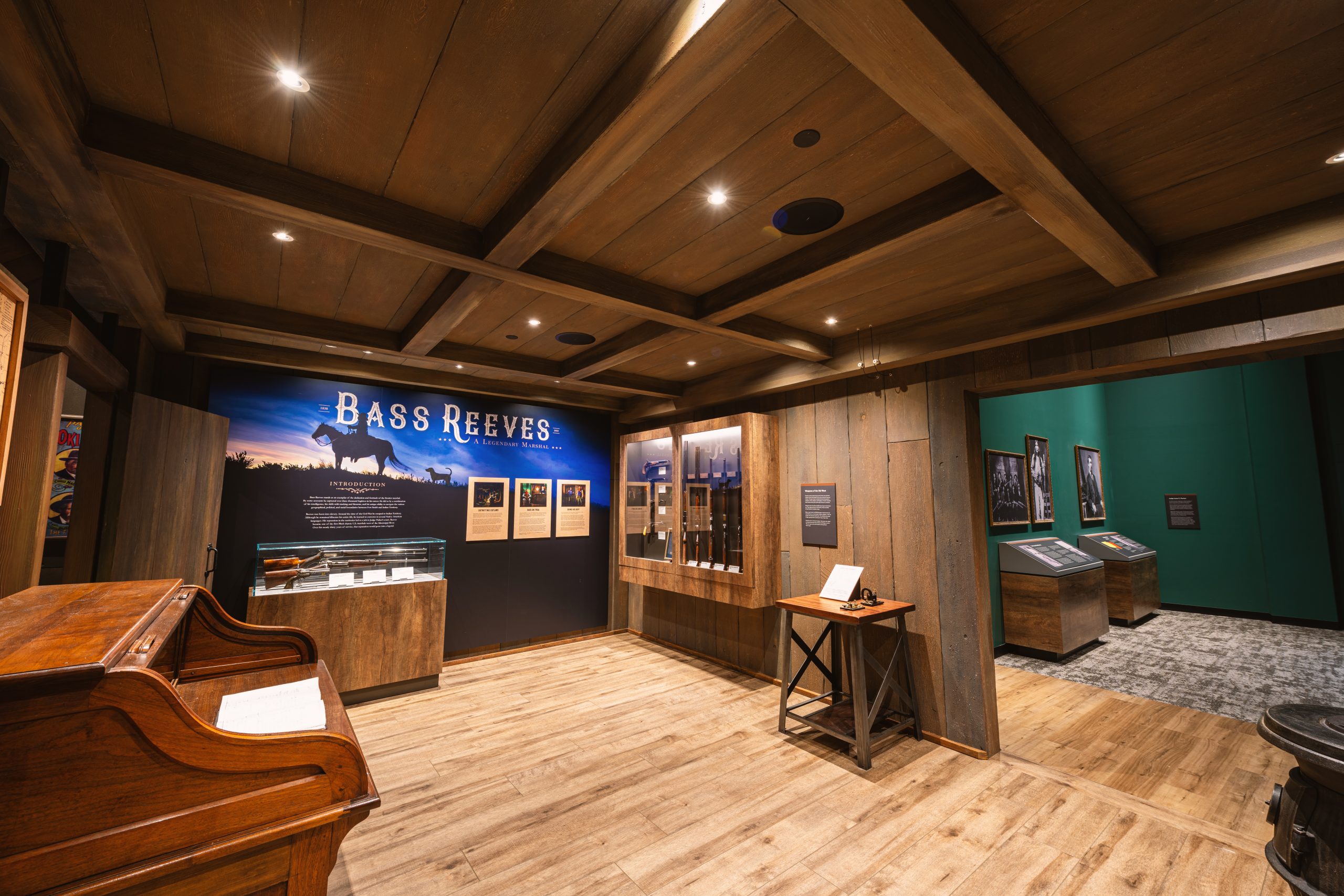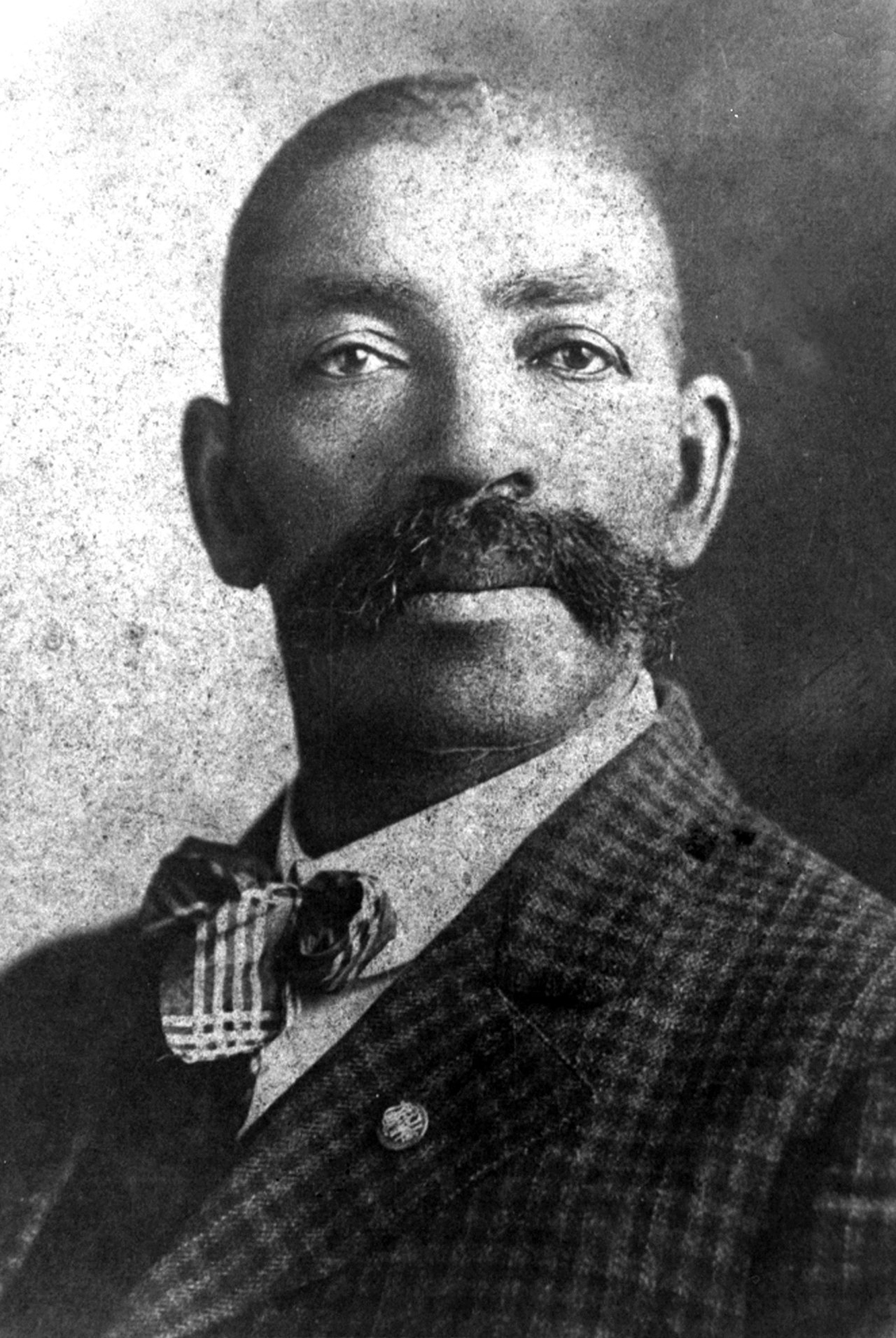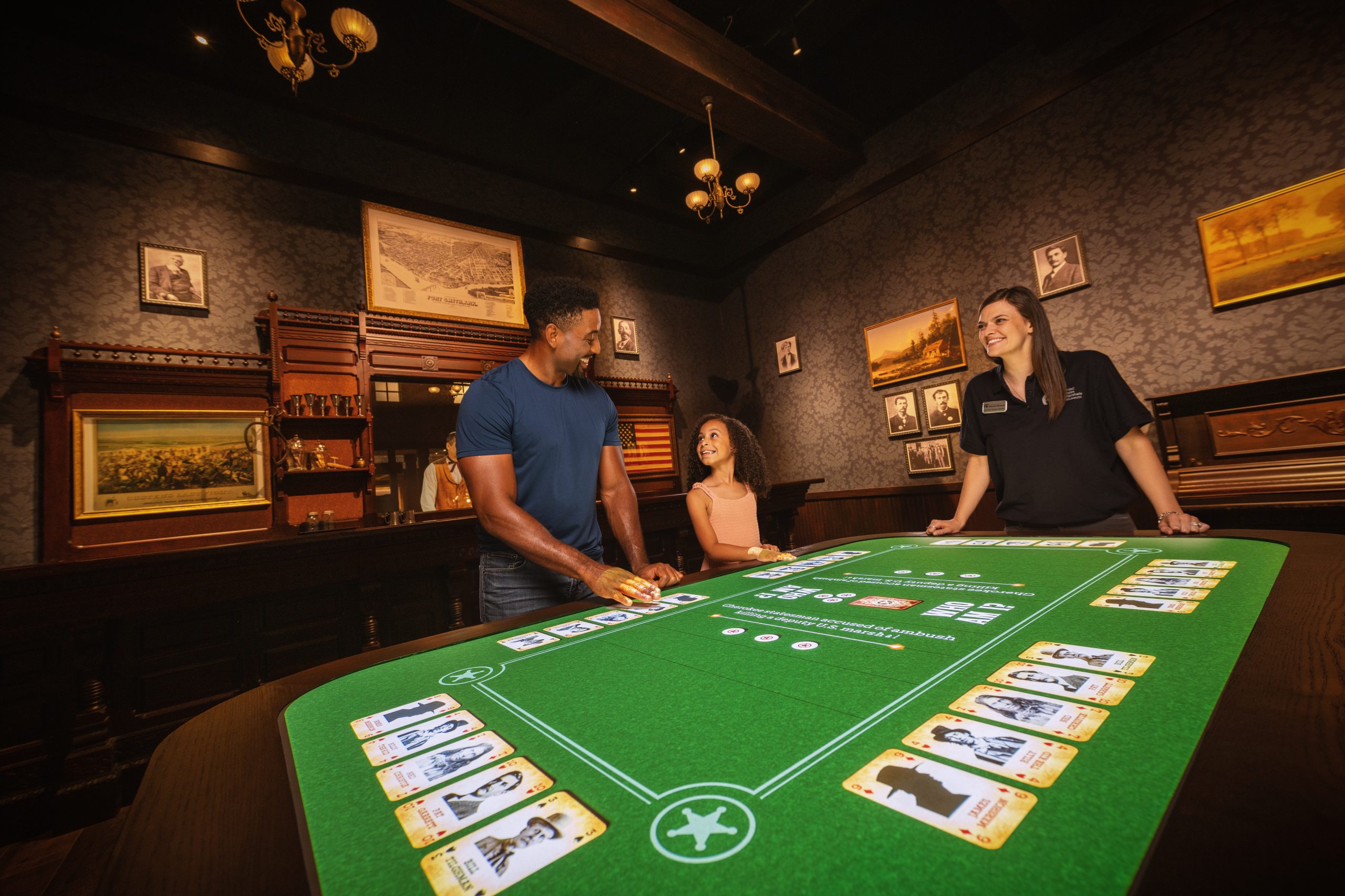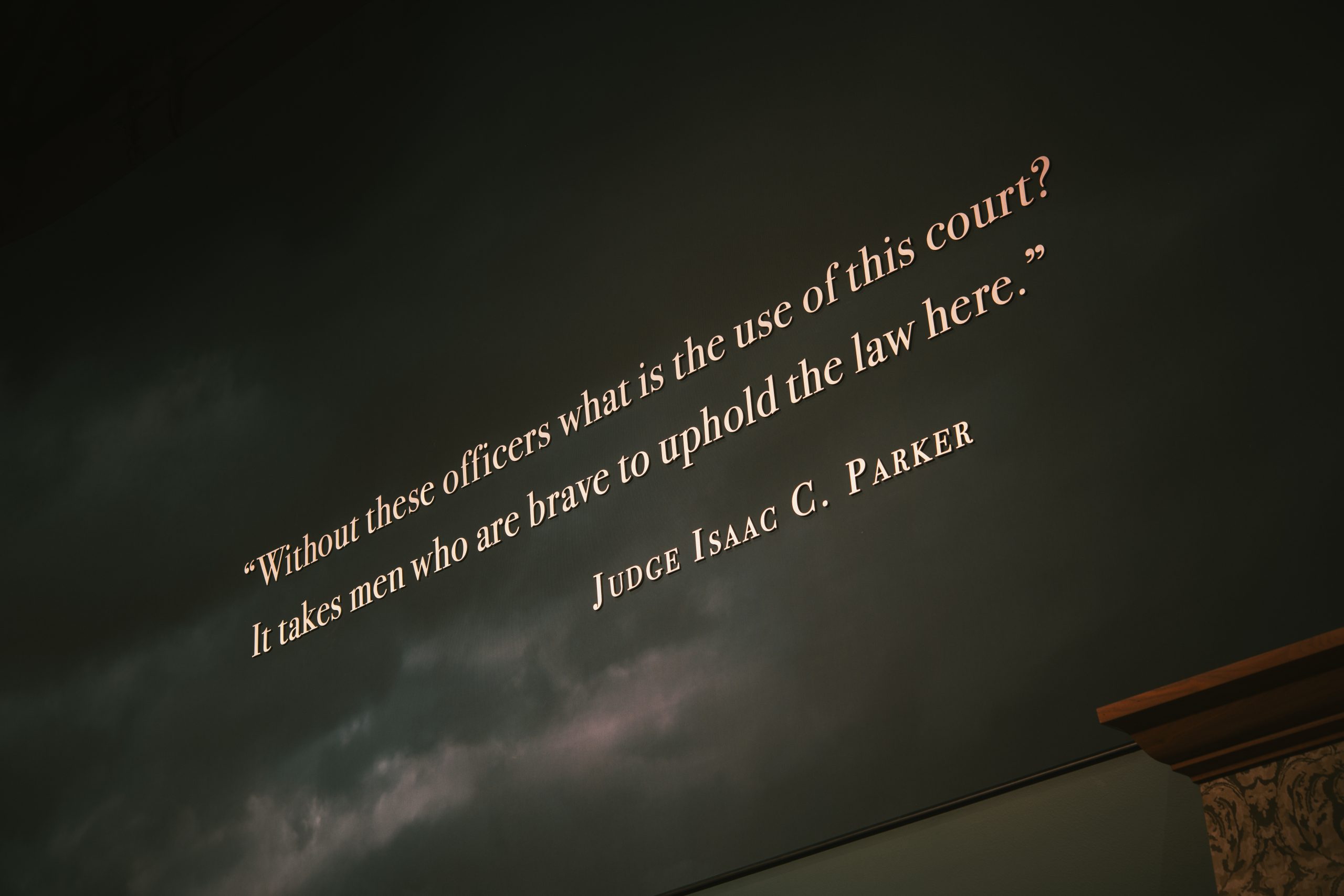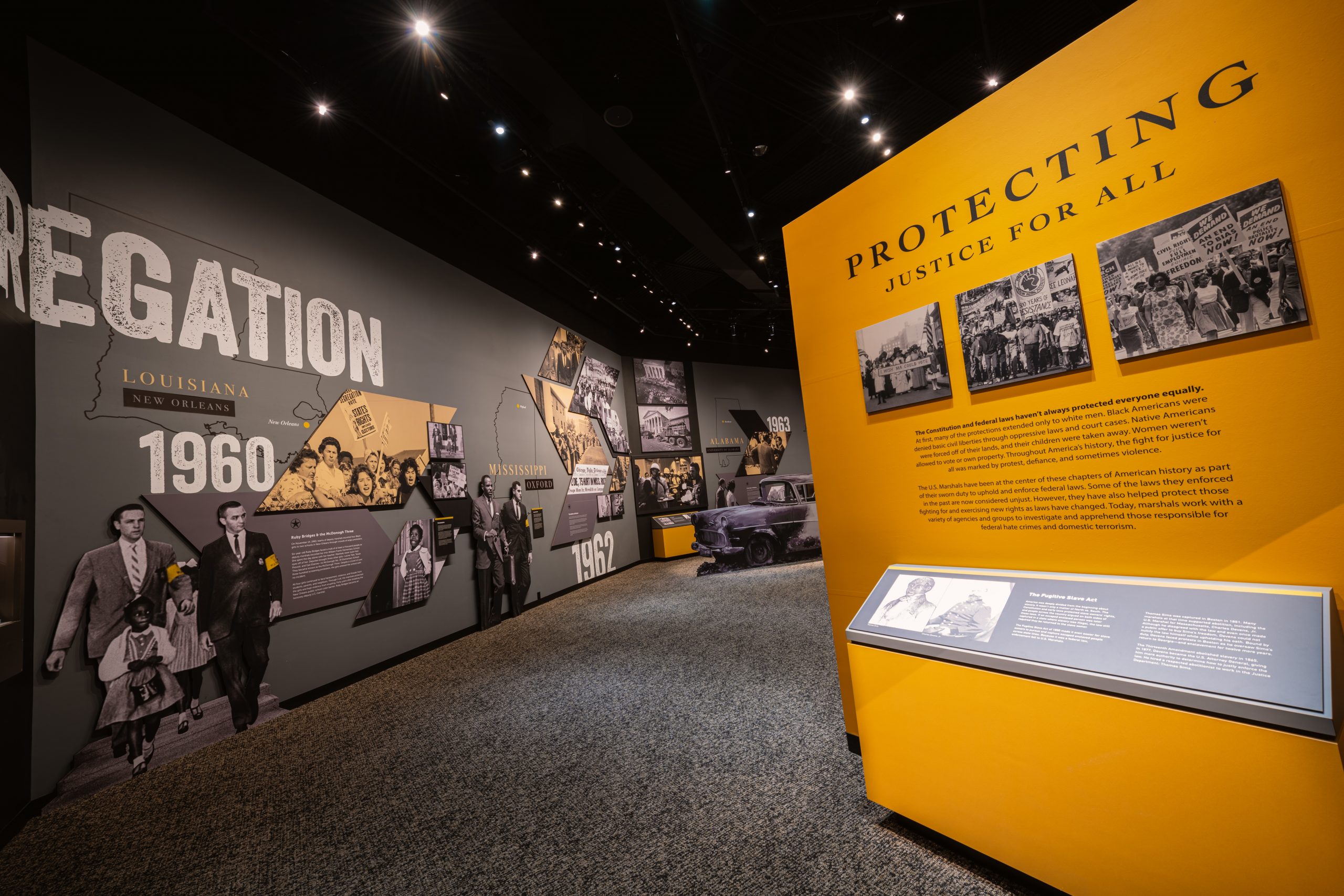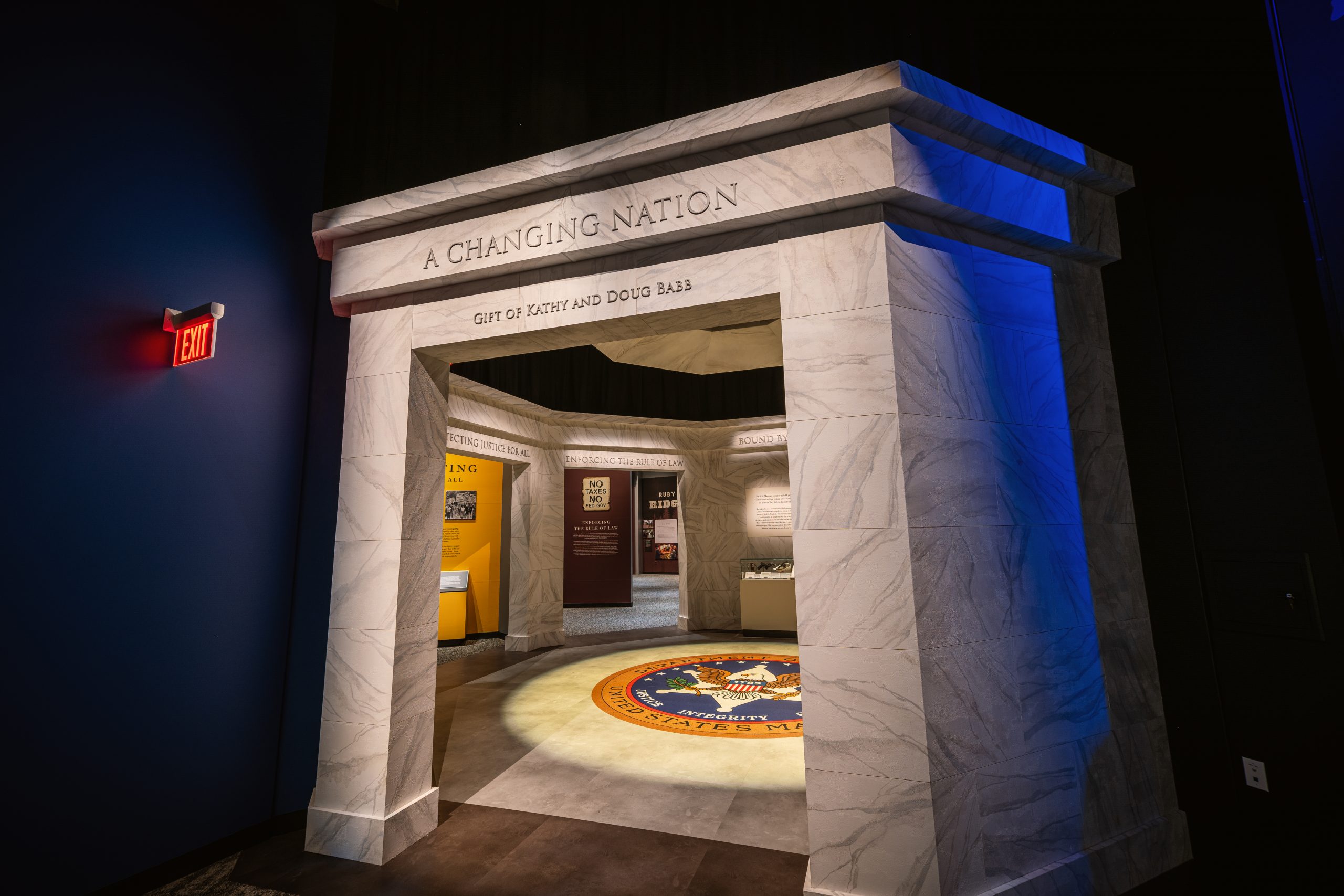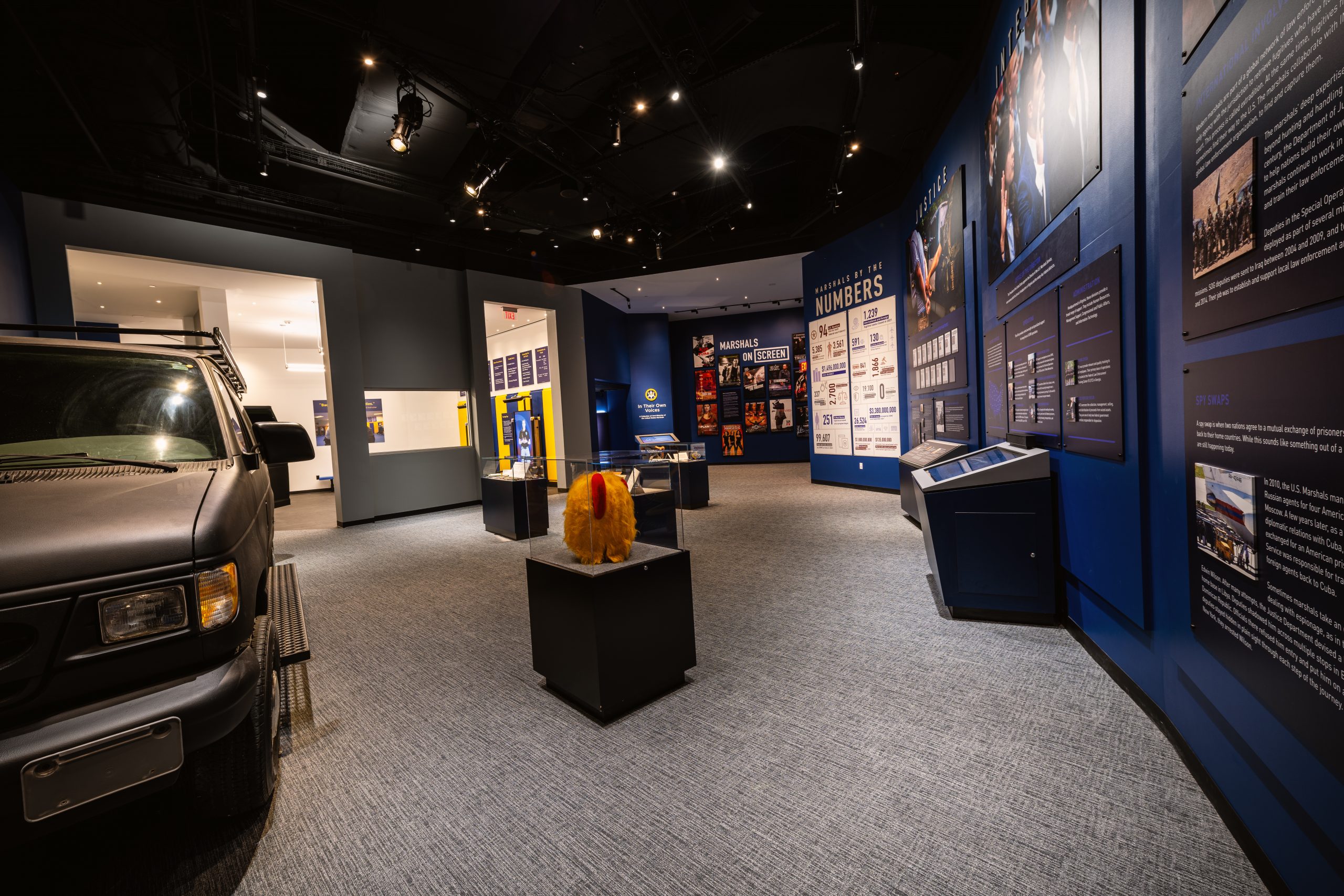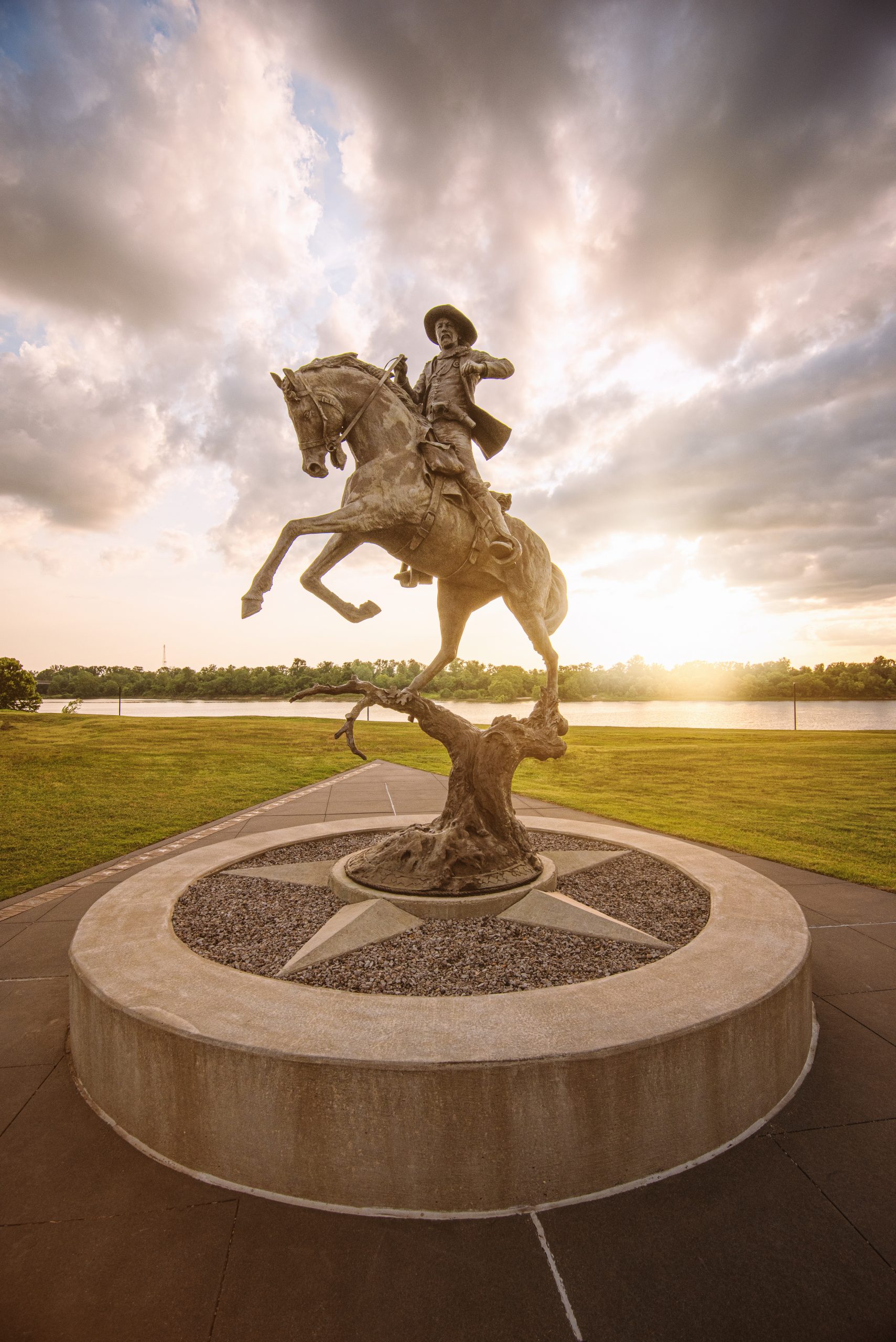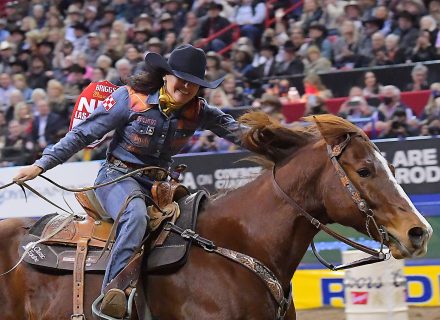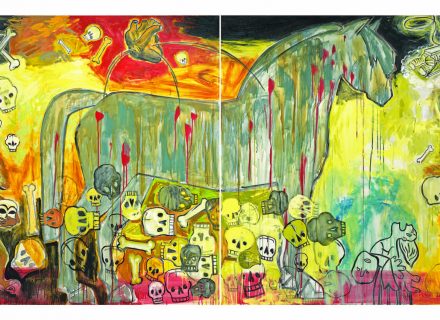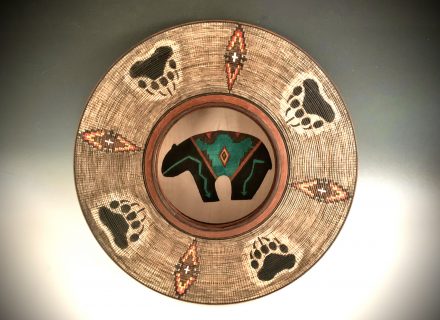Artifacts, performances, galleries and more at Arkansas’ new U.S. Marshals Museum.
C&I talked with Curator of Collections and Exhibits David Kennedy at the brand-new U.S. Marshals Museum in Fort Smith, Arkansas, about a dozen ways to immerse yourself in the iconic law-enforcement service.
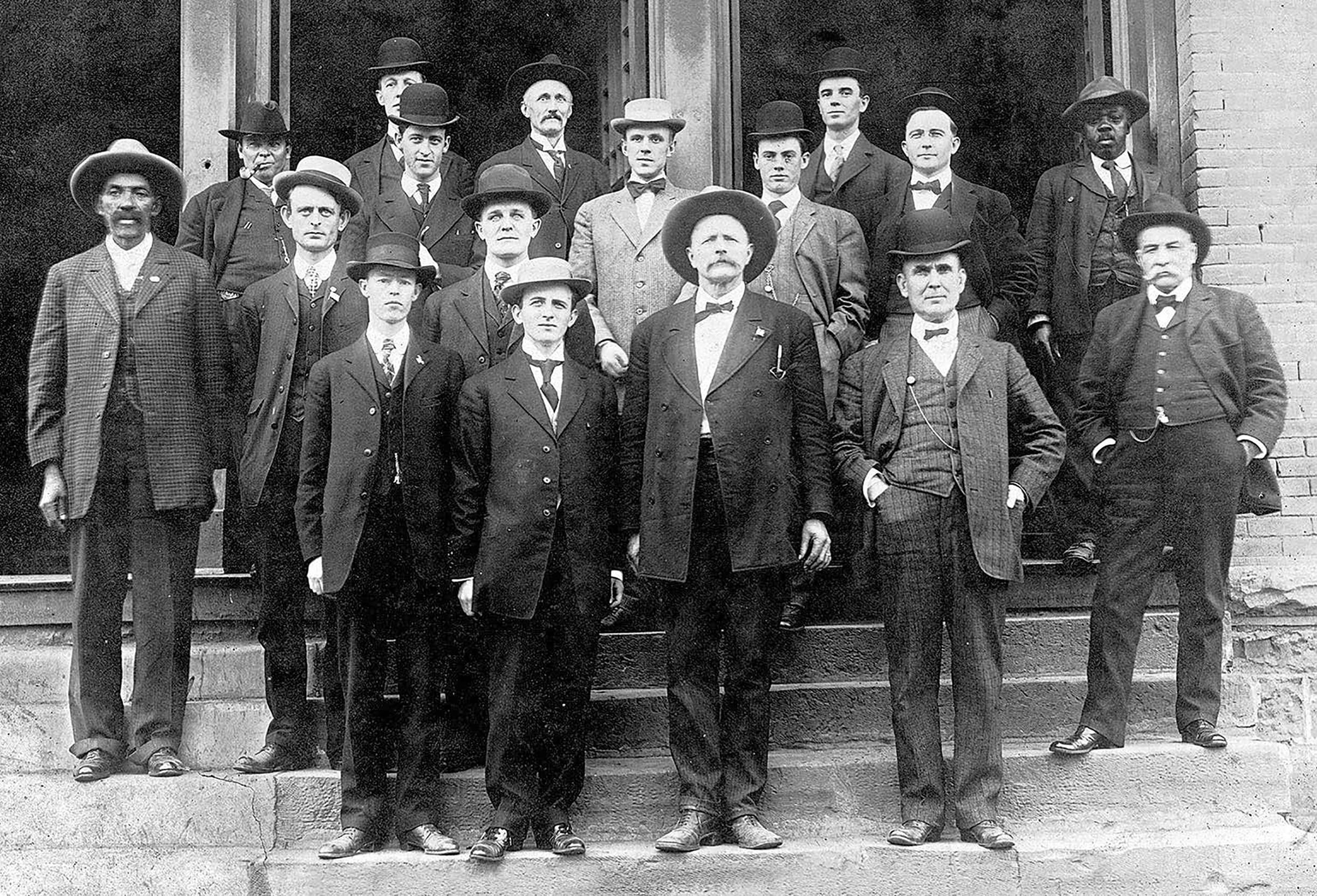 “Federal Official Family” group photo (Bass Reeves far left), ca. November 16,1907.
“Federal Official Family” group photo (Bass Reeves far left), ca. November 16,1907.
- Our “Magic Book” of the first 13 U.S. marshals appointed by President George Washington in 1789. Washington knew most of them personally and many either fought in the American Revolution or served as representatives of their states in the Continental Congress.
- The Samuel M. Sicard Hall of Honor recognizing more than 380 men and women who gave their lives supporting the office of the United States Marshal. Nearly one-third of the men on the wall died in what is now known as Oklahoma. Half of that number rode out of the court in Fort Smith, Arkansas.
- “Stories Under the Stars” is a campfire scene with four deputies from across the nation’s history telling each other stories from their time period. One of them looks suspiciously like Bass Reeves. …
- The Goingsnake Theater tells the story of the deadliest day in the history of the U.S. Marshals. A marshals posse became involved in a Cherokee Nation family feud — and a related murder trial. The resulting gunfight was the biggest and bloodiest nonmilitary shootout in the American West. On exhibit is the Spencer carbine carried by the defendant in the murder trial.
- The Marshals Office within our Frontier Marshals Gallery. Of special interest are a gun case showing firearms common to the period and three special guns carried by three important deputies — Bass Reeves, Heck Thomas, and Chris Madsen. Also in the space are a copy of a jailer’s ledger from the federal court at Muskogee, Indian Territory, and a real cell door, which is quickly becoming a favorite selfie opportunity. Also in the Marshals Office is one of James Arness’ badges from Gunsmoke, which Arness gave as a personal gift to a deputy director at the Marshals Service in the 1980s.
- Bass Reeves’ revolver: We exhibit a Colt Single Action Revolver from the family. To our knowledge, it is the only legitimate Bass Reeves-attributed gun. This revolver and an associated badge were given to the museum by a grandson of Jane Reeves, Bass’ sister. Given the caliber of the revolver (.32-20 / .32 WCF), it is doubtful he carried it while working as a deputy.
7. If you are going to tell a story in the Old West, you need to go to a saloon. The digital bartender in our saloon tells stories about deputies across the 19th century. You can also test your knowledge on our poker table as you play cards with your friends and family.
- Learn how deputies make decisions by taking “The Marshals Challenge.” Learn about real-world scenarios from real deputy U.S. marshals. Make decisions to achieve the best results — and then find out how you did.
- In the “To Carry a Badge” interactive exhibit, you can find out if you have what it takes to be a deputy in today’s U.S. Marshals Service. Chase down a fugitive and gather the information you will need to stay safe and to put him away. Being physically fit won’t mean a thing if you aren’t paying attention to your surroundings.
- The variety — and danger — of a marshal’s job comes to light in the gallery called“A Changing Nation.” Marshals go where they are needed, often with no say in the matter and without regard to personal belief. They enforce the law of the land and change their mission as the laws change. They are also the “other duties agency” as their broad scope means they often perform nonjudicial duties as needed.
- The “Modern Marshals” Gallery focuses on the last 50 years of change in the U.S. Marshals Service as they have responded to the nation’s changing needs. “In Their Own Voices” shares more than 100 oral histories from deputies and others who were at New Orleans and Ole Miss, Oklahoma City and 9/11, and who also served as P.O.D.s — Plain Old Deputies.
- The statue The Lighthorseman by Cherokee/Osage artist Daniel Horsechief was commissioned by the Intertribal Council of the Five Civilized Tribes of Oklahoma. It recognizes the history and sacrifice of law enforcement from the Cherokee, Choctaw, Chickasaw, Muscogee (Creek), and Seminole nations. These police agencies were known as the Lighthorse. The Lighthorse regularly worked with U.S. marshals to capture criminal fugitives and those suspected of breaking the law — whether federal or tribal. Several Lighthorse gave their lives in the line of duty assisting the marshals. Many more captured or killed suspects accused of the murder of deputy U.S. marshals and posse. Accordingly, the statue was placed in a location in view of the Samuel M. Sicard Hall of Honor.
Read all about the new Marshals Museum and its most storied lawman, Bass Reeves, in our January 2023 issue. Find out more at the official website of the U.S. Marshals Museum.







